Health
Artificial intelligence identifies cancer killer cells
Published
1 week agoon
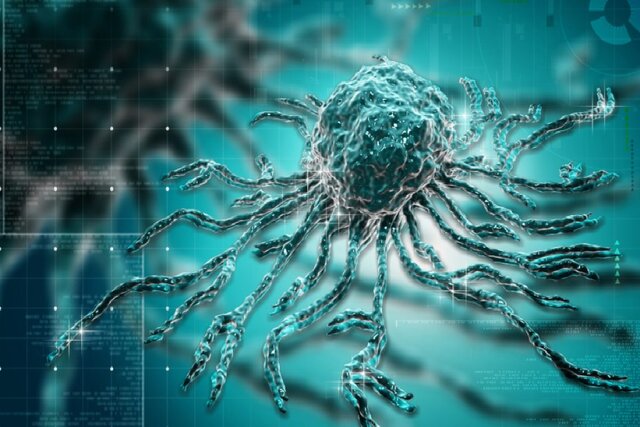

Artificial intelligence identifies cancer killer cells. Using artificial intelligence, scientists have developed a predictive model to identify the most powerful cancer-killing immune cells and deliver cancer immunotherapy.
Artificial intelligence identifies cancer killer cells
A new predictive model can be used in conjunction with multiple algorithms for personalized cancer treatment that matches treatment to the unique cellular makeup of each patient’s tumors.
According to Science Daily, “Alexandre Harari” from the “Ludwig Cancer Research Center”, who supervised this research along with “Rémy Pétremand”, a graduate of this center, said: Artificial intelligence in cell therapy is a new work and may be able to change the treatment method and provide new clinical options to patients.
Cellular immunotherapy involves extracting immune cells from a patient’s tumor, engineering them to enhance their natural cancer-fighting abilities, and transplanting them back into the body after they have grown. T cells are one of two main types of white blood cells, or lymphocytes, that circulate in the blood and seek out cells infected with viruses or cancer.
T cells that infiltrate solid tumors are known as tumor-infiltrating lymphocytes (TILs). However, not all tumor-infiltrating lymphocytes are effective in recognizing and attacking tumor cells. Harari explained: Actually, only a part of the lymphocytes react to the tumor and most of them are observers. The challenge we faced was to identify a small number of tumor-infiltrating lymphocytes. These lymphocytes are equipped with T cell receptors that can recognize antigens on the tumor.
To do this, Harari and his team developed an artificial intelligence-based predictive model called TRTpred that can rank T-cell receptors, or TCRs, based on their target tumor reactivity. To develop TRTpred, they used 235 T-cell receptors collected from patients with metastatic melanoma who had previously been classified as tumor-reactive or non-reactive. The research group loaded the gene expression profile of T cells bearing each T cell receptor into a machine learning model to identify patterns that distinguish tumor-reactive T cells from their inactive counterparts.
TRTpred can learn from a T-cell population and create a rule to apply to a new population, Harari explained. So, when faced with a new T-cell receptor, the model can read its profile and predict whether the tumor will respond.
The TRTpred model analyzed tumor-infiltrating lymphocytes in 42 patients with melanoma and gastrointestinal, lung, and breast cancers and identified tumor-reactive T cell receptors with 90% accuracy. The researchers modified their tumor-infiltrating lymphocyte selection process by using a secondary filter that screens only tumor-reactive T cells; That is, only cells that have a strong connection to tumor antigens.
“TRTpred is exclusively predictive of whether or not the T cell receptor is reactive to the tumor, but some tumor-reactive receptors make a strong binding to tumor cells and are therefore very effective,” Harari said. While others do it out of laziness. Distinguishing between strong and weak connections indicates effectiveness.
The researchers showed that T cells identified as tumor reactants by TRTpred and the secondary algorithm are often located in tumors. The findings of this study are in line with other studies that show that effective T cells usually penetrate deep into the tumor.
Next, the researchers introduced a third filter to maximize the detection of tumor antigens. “We want to maximize the chance that tumor-infiltrating lymphocytes will target as many different antigens as possible,” Harari said.
This final filter organizes T cell receptors into several groups based on similar physical and chemical properties. The hypothesis of the researchers is that the T cell receptors in each cluster recognize the same antigen. “So we choose one T-cell receptor in each cluster to amplify to increase the chance of targeting a specific antigen,” said Vincent Zoete, a researcher at the Ludwig Cancer Research Center who developed the T-cell receptor clustering algorithms.
Read more: Discovery of 32 new cancer drugs with the help of artificial intelligence
The researchers call the combination of TRTpred and algorithmic filters “MixTRTpred”.
To validate their method, Harari’s group implanted human tumors into mice, extracted T-cell receptors from their tumor-infiltrating lymphocytes, and used the MixTRTpred system to identify tumor-reactive T cells and multiple antigens in the target tumor. put. Next, they engineered T cells obtained from mice to express T cell receptors and showed that these cells could destroy tumors when transferred to mice.
“George Coukos”, one of the researchers of this project, who is planning to launch the first stage of clinical trial to test this technology in patients, said: This method promises to overcome some of the shortcomings of treatment based on tumor infiltrating lymphocytes. Especially for patients dealing with tumors that are unable to respond to such treatments. Our joint efforts are creating a completely new way of T-cell therapy.
This research was published in “Nature Biotechnology” magazine.


You may like
-

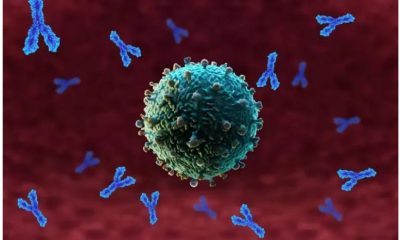


How to rejuvenate an aging immune system?
-




How can hacking the immune system help slow aging?
-

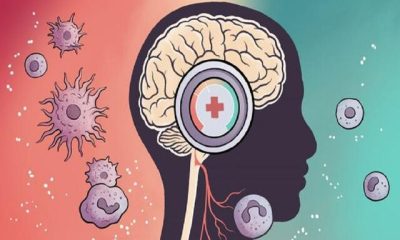


Discovery of the brain circuit that manages inflammation
-




Skin cancer: symptoms, prevention and treatment
-

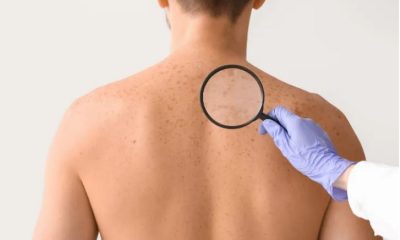


The strange ways skin affects our health
-




Discovery of 32 new cancer drugs with the help of artificial intelligence


How to rejuvenate an aging immune system?
After scientists reduced abnormal stem cells in old animals, mice’s immune systems became more youthful. This technique enhanced the response of old rodents to viral infection and reduced signs of inflammation. In this method, published March 27 in the journal Nature, old mice are treated with an antibody to reduce a population of stem cells that give rise to other types of cells, such as those involved in inflammation.
Excessive inflammation can wreak havoc on the body, and pro-inflammatory stem cells proliferate during aging in mice and humans.
Imbalanced immune system
For decades, researchers in Irving Weissman’s group at Stanford University in California have closely followed the fate of blood stem cells. These cells replenish the supply of red blood cells (which carry oxygen from the lungs to all parts of the body) and white blood cells (which are key components of the immune system).
Balancing the blood stem cell population can rejuvenate the immune system
In 2005, Weissman and colleagues found that as mice age, their blood stem cell population changes. In young mice, there is a balance between two types of blood stem cells, each contributing to a different branch of the immune system. The adaptive compartment produces antibodies and T cells that target specific pathogens. The innate part produces general responses such as inflammation against infection.
However, in old mice, the balance between the two parts of the immune system is skewed towards the production of more pro-inflammatory innate immune cells. Similar changes have been reported in the blood stem cells of aging humans, and researchers speculate that this could lead to a reduced ability to produce new antibodies and T-cell responses. This may explain why the elderly are more susceptible to serious infections from pathogens such as influenza viruses and SARS-CoV-2, and why their response to vaccination is weaker than that of younger people.
Restore the balance of the immune system
If the researchers’ conclusions are correct, restoring balance to the blood stem cell population could also rejuvenate the immune system.
The researchers tested this hypothesis by producing antibodies that bind to blood stem cells, which mainly produce innate immune cells. They then injected these antibodies into old mice with the hope that their immune systems would destroy the stem cells attached to the antibodies.
Antibody treatment rejuvenated the immune system of treated mice. They showed a stronger reaction to the vaccination than the old mice that did not receive the treatment and were better at warding off the viral infection. The treated mice also had lower levels of proteins associated with inflammation, which the authors say shows how different populations of blood stem cells affect the aging of the immune system.
It is possible that the effect of antibody treatment is more than affecting the blood stem cell population. Antibody therapy may also affect the environment in which blood stem cells can live. On the other hand, the said treatment can clear other old cells from the body or stimulate immune responses, thus affecting how mice respond to vaccines and viruses.
It will be years before Weissman and his colleagues’ approach can be tested in humans, but many aspects of the stem cell biology that underlies the production of immune cells are similar in mice and humans.
Weissman’s team is working on a similar approach to rebalance the blood stem cells of elderly people. He believes that even if there is sufficient funding and no unexpected obstacles arise, it will take at least three to five years before they can test their method on humans. In the meantime, the researchers will continue to study the mice to learn more about other effects of the antibody therapy, such as whether it affects the rate of cancer or inflammatory diseases. “The blood-forming system of young and old blood is very different,” says Weissman. “The difference is not just in the bone marrow, but throughout the body.”


How can hacking the immune system help slow aging?
Stem cell researcher Carolina Florian couldn’t believe what she was seeing. His old laboratory mice began to look younger. They were more lively and their fur was shinier. However, all he had done was a short treatment a few weeks earlier with a drug that modified the organization of proteins in a type of stem cell.
Stem cell researcher Carolina Florian couldn’t believe what she was seeing. His old laboratory mice began to look younger. They were more lively and their fur was shinier. However, all he had done was a short treatment a few weeks earlier with a drug that modified the organization of proteins in a type of stem cell.
When technicians repeating Florian’s experiment in two other laboratories reached the same conclusion, Florian became more confident that the treatment in question would rejuvenate the animals. In two papers in 2020 and 2022, his team explained how this process extended the lifespan of mice and kept them in good physical condition into old age.
The purpose of Florian Elixir is the immune system. The immune cells he targeted are called hematopoietic stem cells, which give rise to mature immune cells. By circulating the blood, a mixture of these cells enters all the organs and affects all the functions of the body. However the molecular composition of hematopoietic stem cells changes during aging, and this upsets the balance of the immune cells that these stem cells produce.
Florian, who works at the Bleuge Biomedical Research Institute in Barcelona, says reversing the misalignment that occurs over time appears to reverse many of the problems of aging, not only in the immune system but in the rest of the body as well.
 Description Researchers think the immune system could be the key to healthy aging.
Description Researchers think the immune system could be the key to healthy aging.
In a paper published in March in the journal Nature, researchers show that restoring the balance between two key types of immune cells rejuvenates the immune system of aging mice and improves the animals’ ability to respond to vaccines and ward off viral infections.
Other scientists have used different experimental methods to reach a similar conclusion: Rejuvenating the immune system rejuvenates many organs in animals, at least in mice. More interestingly, evidence shows that aging of the immune system may cause aging of those organs.
The potential of the findings to help people stay healthy in old age is tantalizing. But applying this knowledge and using it in clinics will be challenging. Tampering with the immune system can be dangerous. Therefore, researchers initially aimed at low-risk goals such as improving the response of the elderly to vaccination and improving the efficacy of cancer immunotherapy.
Vittorio Sebastiano, a stem cell scientist at the Stanford School of Medicine in California, says the prospect that reversing aging might curb age-related diseases is enticing, but we proceed with caution.
Weakened immunity
The human immune system is a complex system whose many cellular and molecular components work together to help a person grow, protect him from infection, help heal wounds, and destroy cells that are becoming cancerous. But along with aging and changing the composition of the system, its efficiency decreases. In old age, people become susceptible to a wide range of infectious and non-infectious diseases and become more resistant to the protective power of vaccines.
Aging of the immune system may cause aging of different body parts
The immune system has two main components: the innate system, which indiscriminately destroys invading pathogens, and the more precise adaptive immune system, whose components learn to recognize and produce antibodies against specific foreign bacteria and viruses.
Hematopoietic stem cells in the bone marrow produce both arms of the immune system. They differentiate into two main types (lymphoid cells and myeloid cells), which then undergo further differentiation.
Lymphoid cells are primarily responsible for adaptive immunity and include B cells that produce antibodies, T cells that help attack invaders and coordinate immune responses and natural killer cells that kill infectious cells. Myeloid cells comprise a group of cell types that are mainly involved in innate immunity.
 Proteins in stem cells that produce immune cells become more symmetrical as they age (right).
Proteins in stem cells that produce immune cells become more symmetrical as they age (right).
One of the first changes in the immune system during aging is the shrinking of the thymus, which begins after puberty. The thymus is where T cells mature, but much of this tissue turns to fat by the third decade of life, reducing the production of new T cells and weakening the immune system.
In addition, the function of T cells changes with age and they are not as specialized in detecting infectious agents as before. The ratio of different types of immune cells in the circulation also changes. The ratio of myeloid to lymphoid cells is significantly skewed toward myeloid cells and this can cause inflammation. In addition, an increasing number of immune cells become senescent, meaning that they stop replicating but do not die.
Aging cells usually occur when they undergo mutations. When cells are in this condition, they begin to release inflammatory signals and mark themselves for destruction.
An important anti-cancer and wound-healing mechanism works best when young. But when too much damage accumulates with age and the immune cells themselves age, this mechanism is disrupted. Senescent immune cells, attracted by inflammatory signals from senescent tissues, secrete their own inflammatory molecules. Therefore, they are not cleared properly but instead, add to the inflammation that also damages the surrounding healthy tissues. This phenomenon is known as inflammatory aging. This turns into a terrible positive feedback loop, says Aran Akbar, an immunologist at University College London. Evidence shows that this feedback loop is initiated by the immune system.
Laura Niedernhofer from the University of Minnesota in Minneapolis has shown in a series of experiments in mice that the aging of immune cells causes the aging of other tissues. He says these cells are very dangerous.
His team used genetic methods to delete an important DNA repair enzyme in the immune system of mice. The animals remained healthy until adulthood, but after that, they were no longer able to correct the accumulated mutations, and different types of immune cells began to age.
A few months later, an increasing number of cells in organs such as the liver and kidney were also senescent, and signs of organ damage appeared. When the scientists gave old mice immune cells from the spleens of young, healthy mice, all of these effects were reversed. All of this suggests that modifying the aging properties of the immune system could help prevent or reduce age-related diseases, Niederenhofer says.
Fight against aging
Many scientists are trying to do this from very different angles. Many approaches suggest that very short treatment of the immune system may have long-term effects and minimize side effects.
One of the ways to deal with aging immune cells is to use drugs to remove or inhibit the inflammatory factors that these cells release. Aging immune cells in humans can be changed, Niederenhofer says. If you smoke, they increase and if you exercise, they decrease.
Modifying the immune system can help prevent or reduce aging-related diseases
Some drugs, such as dasatinib, which is approved for the treatment of certain cancers, and quercetin, which is marketed as an antioxidant dietary supplement but not approved as a drug, slow cellular aging, and several trials are testing their effects on aging-related diseases.
Niederneuhofer is conducting a small clinical trial in elderly people with sepsis. Sepsis is a condition that becomes more deadly with age. His team is also conducting experiments to assess which types of immune cells are most involved in aging in the body, and their results could help design more precise treatments. Two types of cells (T cells and natural killer cells) are emerging as the main contenders, he says. He plans to examine natural products and approved drugs for their ability to interact with these types of immune cells during aging.
Akbar thinks targeting inflammation may be just as effective as targeting senescent cells. He and his colleagues conducted a study in healthy volunteers using the investigational compound lozepimod, which inhibits an enzyme involved in the production of a type of inflammatory molecule called cytokines. They treated volunteers with this drug for four days and then measured their skin’s response to an injection of the chickenpox virus over the course of a week. Most people are exposed to this virus during their life and this virus often stays in the body.
As people age, they lose their immunity to the chicken pox virus, and this time it can appear as shingles. The drug restored the immune response in the skin of older volunteers to a level similar to that of young volunteers. Akbar has found in unpublished studies that the same strong results persist up to three months later. Temporarily inhibiting inflammation in this way to keep the immune system functioning may similarly enhance the response of older patients to flu vaccinations, he says.
Boosting the immune system
The value of priming the elderly immune system prior to vaccination has been demonstrated in a series of clinical trials led by Joanne Mannick, CEO of Boston, Massachusetts-based Tornado Therapeutics. The trials tested analogs of the drug rapamycin and other drugs with similar mechanisms that target the immune system and are approved to prevent organ transplant rejection and to treat certain cancers.
The mentioned drugs inhibit an enzyme called mTOR, which is vital for many physiological functions and whose function is impaired in aging. Participants were treated with doses of the drug that were low enough to avoid side effects for several weeks before receiving the flu vaccine. This treatment regimen improved their response to the vaccine and increased their immune system’s ability to resist viral infections.
 Vaccines are less effective in older people, but new approaches could increase their potency.
Vaccines are less effective in older people, but new approaches could increase their potency.
However the drug rapamycin can increase susceptibility to infection and affect metabolism, so Manick is planning trials with similar drugs that could be safer. “There are different ways to improve the immune system,” he notes.
Another way is to try to restore thymus function to maintain the production of new T cells. Jarrod Dudakoff, an immunologist at the Fred Hutchinson Cancer Center in Seattle, is studying the basic biology of thymus cells to understand how they regenerate after bouts of stress. Dudakov says it’s a little early to see how our understanding of this can be applied in the clinic. But he thinks it’s important to preserve the ability of the thymus to produce T cells.
Others try to fight aging by producing thymus tissue from powerful stem cells and then transplanting it. But Greg Fahey, chief scientific officer at Intervene Immune in Torrance, Calif., says there’s no need to wait to achieve those long-term prospects because synthetic growth hormone regenerates thymus tissue. He is conducting small studies in healthy volunteers using growth hormones as part of a mixture of compounds.
Preliminary results show that the amount of functional thymus tissue in the participants increased and their epigenetic clock (a biomarker of aging) was reversed by several years. Fahey is conducting further testing to see if the drug combination also improves the physical condition of the participants.
Turn back the clock
Another approach that has yet to reach the clinic is reprogramming immune cells to try to turn back the clock on cells that have aged. This procedure involves temporarily placing the cells in a dish exposed to a combination of transcription factors that induce a pluripotent state in mature cells.
Sebastiano and colleagues have shown in human cells that this corrects the epigenetic changes that accompany aging. He has founded a startup to use this technique to tackle a type of cancer treatment called CAR T, in which T cells are engineered outside the body to target and destroy a person’s cancer. However, the T cells may age before they are returned to the person. Rejuvenating them makes production faster and more powerful, says Sebastiano.
One of the challenges of aging studies is the inability to measure aging accurately
Florian’s approach also aims to produce healthier immune cells within the body. Hematopoietic stem cells in the blood develop epigenetic changes and their environment also changes with age. This causes the proteins to arrange themselves in a more symmetrical way in the cells (a process known as polarization), which shifts the balance of differentiation of stem cells towards myeloid cells.
In his studies, Florian used a four-day treatment with a compound called CASIN, which inhibited part of this process to correct polarization and help the mice live longer. When hematopoietic stem cells from aged mice that had received CASIN were transplanted into aged mice that had not received the treatment, the same life-extending effects were seen. Florian hopes to turn his results into a practical method in the clinic. He thinks his drug may help rebuild the immune system after receiving cancer chemotherapy.
The challenge of measuring aging
Research on immune aging faces major challenges. One of the challenges in aging studies of all organs is the inability to measure aging accurately. “We don’t know in a quantitative, measurable, predictable way what aging means at the molecular level in different cell types,” says Sebastiano. “Without these metrics, it is very difficult to demonstrate rejuvenation.”
Another challenge is the difficulty in determining the characteristics that make an immune cell unique. Until recently, it was difficult to show where each of the immune cell subsets lived and how they changed over time. But technologies such as single-cell RNA sequencing, which quantitatively measures genes expressed in single cells, have made the analysis more challenging. For example, a large study of immune cells in the blood of humans and mice across a range of ages, published last November, revealed 55 subpopulations. Only 12 subpopulations of cells changed with age.
By collaborating with different research areas, scientists hope to prove that the immune system plays an important role in healthy aging. Don’t expect an elixir of youth anytime soon, says Florian. Aging research will take a long time, but it can help design tools that will be transformative.
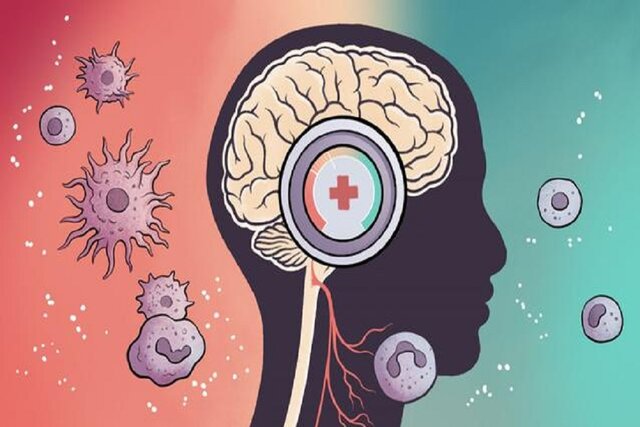

Researchers believe that using this new brain circuit could lead to new treatments for many immune disorders.
Discovery of the brain super circuit that manages inflammation
Researchers have found that brainstem neurons act as regulators of inflammation. These neurons can increase or decrease inflammation in response to signals sent by the vagus nerve, a collection of thousands of nerve fibers that connect the brain and internal organs.
A new study in mice shows that a peripheral immune stimulus powerfully activates the body-brain axis to regulate immune responses, according to AI. Pro- and anti-inflammatory cytokines communicate with specific populations of vagal neurons to inform the brain of an emerging inflammatory response. The brain, in turn, strongly modulates this environmental immune response process.
Cytokines are a group of water-soluble protein molecules that are secreted from various cells in response to a stimulus and are responsible for transmitting messages between cells. The consequence of the presence of cytokines is a change in the behavior of cells with secreted cytokine receptors, including growth, change, or cell death. The action and effect of cytokine produced by one cell includes more cells around the same cell, but it can have a systemic action and effect on the whole organism.
Cytokine has the effect of changing the secreting cell itself and changes in other cells, and like a hormone, it can have effects on cells far away from it.
The vagus nerve is also the longest brain nerve and the tenth pair of brain nerves out of 12 pairs of brain nerves, which is involved in swallowing food, speaking, parasympathetic activities, and digestion. The motor part of this nerve is somatic and innervates the larynx, soft palate, and pharynx. This nerve is the longest cranial nerve, and like most cranial nerves, it starts from the brain stem and is divided into many branches that innervate most of the muscles of the pharynx and larynx, esophagus, stomach, and parasympathetic heart, lung, liver, spleen, etc.
Discovery of the neuro-immune axis
Based on this study, the researchers used single-cell RNA sequencing, combined with functional imaging, to identify circuit components of this neuro-immune axis and show that its selective manipulation can effectively suppress the pro-inflammatory response while maintaining an anti-inflammatory state.
This new brain circuit, like a thermostat, helps increase or decrease inflammatory responses so the body responds in a healthy way, said Dr. Hao Jin, who began the study as a postdoctoral researcher in Dr. Zucker’s lab.
Looking at past research, it makes sense that a master regulator controls this critical response, the researchers say. Many psychosomatic effects can actually be related to brain circuits that tell your body something.
They believe that using this new brain circuit could lead to new treatments for many immune disorders.
Promising therapeutic potential
Brain-induced transformation of an immune response pathway offers new possibilities in modulating a wide range of immune disorders, from autoimmune diseases to cytokine shock.
“This new discovery could open up an exciting therapeutic area for controlling inflammation and immunity,” said Charles Zucker, senior author of the study.
Researchers believe that controlling this newly discovered brain circuit could lead to new treatments for common autoimmune diseases including rheumatoid arthritis, type 1 diabetes, multiple sclerosis, lupus, and inflammatory bowel disease.
Read more: Brain cancer vaccine success in human trials
This new control agent could also help treat other diseases such as prolonged COVID-19 syndrome, organ transplant rejection, and cytokine storms caused by COVID-19. According to the researchers, inhibiting the activity of this circuit could make a difference in a wide range of conditions that affect the immune system and help treat dysregulated inflammatory states in people suffering from diseases and immune disorders. This study was published in the journal Nature.


How to rejuvenate an aging immune system?


How can hacking the immune system help slow aging?


The Biography of Jim Simons


How have bees domesticated viruses?


Why do most mammals have five fingers?


Xiaomi Pad 6S Pro review


AI PC; revolutionary technology of the future?


Can humans endure the psychological torment of living on Mars?


Samsung Galaxy A55 vs Galaxy A35


Motorola Edge 50 Pro review, technical specifications
Popular
-



 Technology10 months ago
Technology10 months agoWho has checked our Whatsapp profile viewed my Whatsapp August 2023
-



 Technology10 months ago
Technology10 months agoSecond WhatsApp , how to install and download dual WhatsApp August 2023
-



 Technology11 months ago
Technology11 months agoHow to use ChatGPT on Android and iOS
-



 Technology11 months ago
Technology11 months agoThe best Android tablets 2023, buying guide
-



 AI1 year ago
AI1 year agoUber replaces human drivers with robots
-



 Humans1 year ago
Humans1 year agoCell Rover analyzes the inside of cells without destroying them
-



 Technology11 months ago
Technology11 months agoThe best photography cameras 2023, buying guide and price
-



 Technology11 months ago
Technology11 months agoHow to prevent automatic download of applications on Samsung phones
